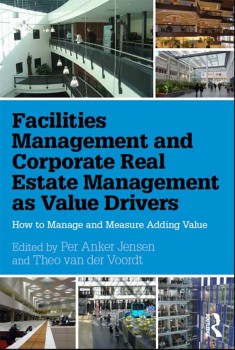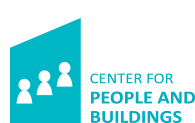Facilities Management and Corporate Real Estate Management as Value Drivers: How to Manage and Measure Adding Value
September 2016 | Per Anker Jensen (editor), Theo van der Voordt (editor)

Facilities Management (FM) and Corporate Real Estate Management (CREM) are two closely related and relatively new management disciplines with developing international professions and increasing academic attention. Both disciplines have from the outset a strong focus on controlling and reducing cost for real estate, facilities and related services. In recent years there has been a change towards putting more focus on how FM/CREM can add value to the organisation. This book is driven by the need to develop a widely accepted and easily applicable conceptual framework of adding value by FM and CREM. It presents the state of the art of theoretical knowledge and empirical evidence about the impact of buildings and facilities on 12 value parameters and how to manage and measure these values. The findings are connected to a new Value Adding Management model.
The book is research based with a focus on guidance to practice. It offers a transdisciplinary approach, integrating academic knowledge from a variety of different fields with practical experience. It also includes 12 interviews with practitioners, shedding light as to how they manage adding value in practice. This is a much needed resource for practitioners, researchers and teachers from the field of FM and CREM, as well as students at both undergraduate and postgraduate level.
Purchasing the book: https://www.routledge.com/Facilities-Management-and-Corporate-Real-Estate-Management-as-Value-Drivers/Jensen-Voordt/p/book/9781138907188
Theo van der Voordt from TU Delft and CfPB was one of the editors. Sandra Brunia and Iris de Been of CfPB contributed to the chapters on satisfaction and productivity.
